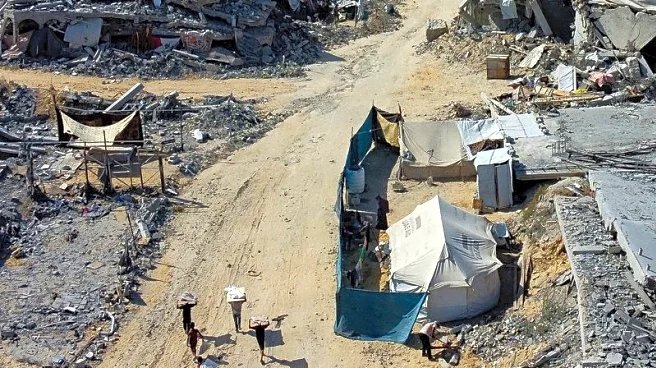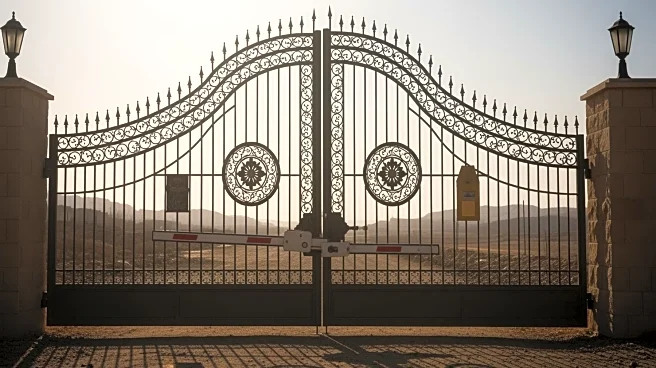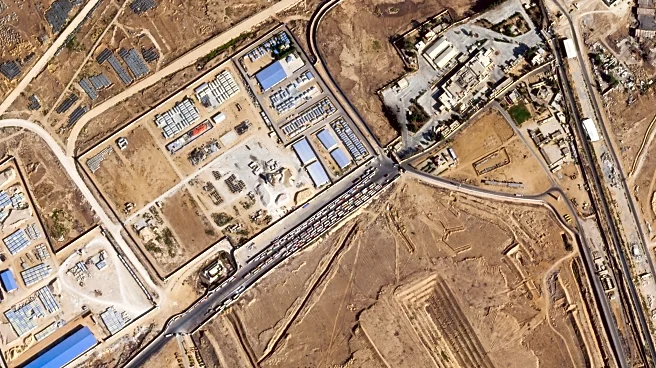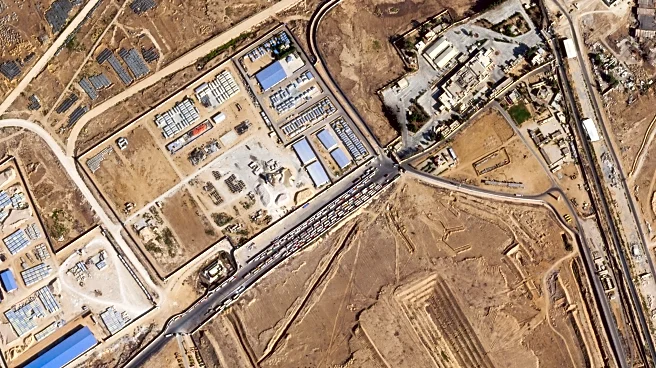What's Happening?
U.S. Vice President JD Vance has arrived in Israel to reinforce the fragile ceasefire in Gaza, which has been under strain due to recent violence. The ceasefire, brokered by the U.S., aims to end the two-year
conflict between Israel and Hamas. Vance's visit follows the arrival of two top White House envoys and is part of efforts to stabilize the situation. During his visit, Vance will meet with Israeli Prime Minister Benjamin Netanyahu and hold a news conference in Jerusalem. He is also expected to meet with families of hostages whose bodies are still held in Gaza and those released last week. The ceasefire agreement includes the release of hostages and the return of bodies, with Israel confirming the release of Tal Haimi's body, a victim of the October 7, 2023 attack. Despite recent retaliatory strikes by Israel, Hamas negotiators have reiterated their commitment to ending the war.
Why It's Important?
The ceasefire in Gaza is crucial for regional stability and the prevention of further loss of life. The involvement of U.S. Vice President JD Vance underscores the importance the U.S. places on maintaining peace in the region. The ceasefire agreement, which includes the exchange of hostages and bodies, is a significant step towards ending the conflict. However, recent violence has tested the agreement's durability, highlighting the challenges in achieving lasting peace. The situation impacts not only the immediate region but also international relations, as countries like Qatar continue to play a mediating role. The ceasefire's success or failure could influence future diplomatic efforts and the broader geopolitical landscape.
What's Next?
Vice President Vance's visit is expected to last until Thursday, during which he will engage in discussions with Israeli leaders and affected families. The ongoing negotiations and exchanges under the ceasefire agreement will continue to be monitored closely. The international community, including mediators like Qatar, will likely maintain pressure on both parties to adhere to the ceasefire terms. The situation remains delicate, with potential for further violence if the ceasefire is breached. The U.S. and other stakeholders will need to navigate complex diplomatic channels to ensure the ceasefire holds and progresses towards a long-term peace solution.
Beyond the Headlines
The ceasefire agreement has deeper implications, including ethical and humanitarian concerns. Reports of returned bodies showing signs of torture raise serious human rights issues, prompting calls for international investigations. The treatment of hostages and prisoners during the conflict highlights the need for accountability and justice. These aspects could influence public opinion and international policy regarding the conflict. The ceasefire also reflects broader geopolitical dynamics, with countries like Egypt and Qatar playing significant roles in mediation efforts. The situation in Gaza serves as a microcosm of larger regional tensions and the challenges of achieving peace in conflict zones.













